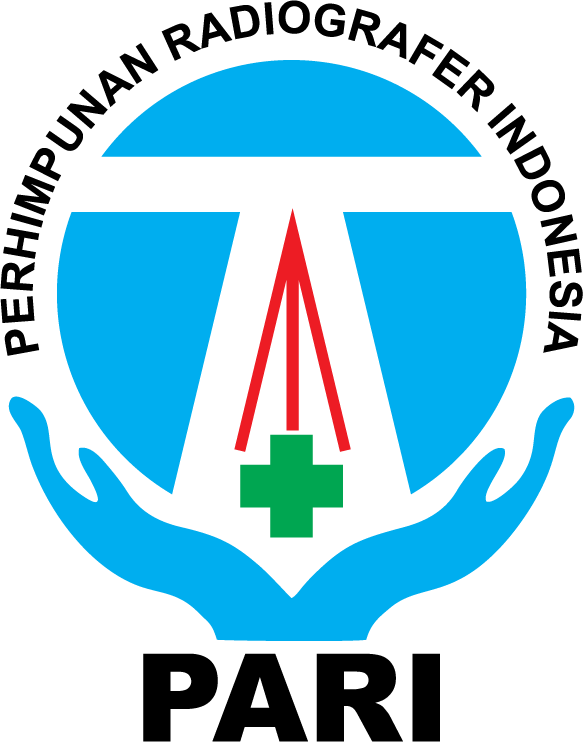PERBEDAAN HASIL GAMBARAN FASE NON DELAY DENGAN FASE DELAY DI AREA BLADDER PADA PEMERIKSAAN PET/CT
Abstract
Background : PET/CT examination is an examination performed by injection of a radiopharmaceutical that consist of 18F-FDG which given intravenously to evaluate lesions in whole body. However, some PET/CT examination using delay phase for certain pathologies and if the doctor unsure about the resultiong image. This study peform the difference image in quantitative of PET/CT examination between non delay phase and delay phase in area bladder and surrounding.
Methods : The type of research conducted is quantitatif research with a case study approach, the research that provides a detail description of the actual situation in the hospital. Subjects in the form of radiographers, nuclear medicine specialist, and scientific literature and objects are images of non delay and delay phase PET/CT in the bladder area. Data is taken by observation, interview, and documentation.
Results : Assessment image of PET/CT using the value of SUV by ROI on several organ such us the baldder, rectum, ileum, and sacrum. In the non delay and delay phase, the value of the SUV was compared and the result on rectum area was increased, in other organ such as the bladder, ileum, and sacrum the value of SUV was decreased.
Conclutions : The difference of image between non delay and delay phase can be seen from the value of SUV organ. SUV value can high in the bladder area because of the accumulation of FDG and scanning from the head so when scanning the pelvis value of SUV is high and can infuluence the image of surrounding organs.
Keywords
Full Text:
PDFReferences
A. Karellas and B. R. Thomadsen, Physics of PET and SPECT Imaging. Taylor & Francis Group, 2017.
G. B. Saha, Basics of PET Imaging, Third Edit. Spinger, 2016.
M. A. Mortensen et al., “A prospective study on dual time F ‑ FDG ‑ PET / CT in high ‑ risk prostate cancer patients,” BMC Res. Notes, pp. 2–5, 2018.
R. Boellaard, “Chapter 3: PET Imaging Instrumentation and Principles of PET Protocol Optimisation,” 2010.
R. Boellaard et al., “FDG PET and PET / CT : EANM procedure guidelines for tumour PET imaging : version 1.0,” J. Nucl. Med. Imaging, pp. 181–200, 2009.
R. V Parghane and S. Basu, “Dual–time point 18F-FDG-PET and PET/CT for Differentiating Benign From Malignant Musculoskeletal Lesions : Opportunities and Limitations,” Semin. Nucl. Med., 2017.
S. Harkirat, S. S. Anand, and M. J. Jacob, “Forced diuresis and dual-phase 18F-fluorodeoxyglucose-PET / CT scan for restaging of urinary bladder cancers,” pp. 13–20, 2010.
S. Soongsathitanon, P. Masa-ah, and M. Tuntawiroon, “A new Standard Uptake Values ( SUV ) Calculation based on Pixel Intensity Values,” vol. 6, no. 1, pp. 26–33, 2012.
Y.-Y. Lu et al., “Clinical value of FDG PET or PET / CT in urinary bladder cancer : A systemic review,” vol. 81, pp. 2411–2416, 2011.
Z. Alatas et al., Buku Pintar Nuklir. Batan, 2015.
DOI: https://doi.org/10.31983/jimed.v5i2.4405
Article Metrics
Refbacks
- There are currently no refbacks.
JURNAL IMEJING DIAGNOSTIK by http://ejournal.poltekkes-smg.ac.id/ojs/index.php/jimed is licensed under a Creative Commons Attribution-ShareAlike 4.0 International License.

.png)
.png)
.png)
.png)
.png)
.png)
.png)











